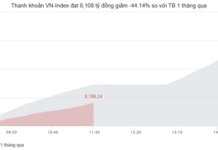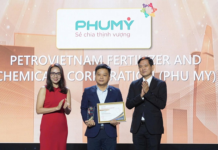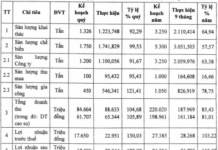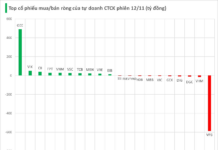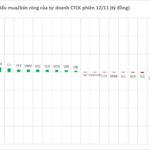At the 2025 Housing Real Estate Forum themed “Satellite Waves,” organized by the Labor Newspaper on the afternoon of September 18th in Ho Chi Minh City, Dr. Arch. Ngo Viet Nam Son highlighted the administrative merger of departments and two-tier governments as a pivotal moment. This shift opens new opportunities for Ho Chi Minh City and its surrounding areas, urging real estate businesses to rethink their development strategies.

Dr. Arch. Ngo Viet Nam Son at the Forum.
|
According to Dr. Son, the merger will reduce the nation’s provinces from 63 to 34, with 23 coastal provinces. Notably, Ho Chi Minh City, along with Dong Nai, Binh Duong, and Ba Ria – Vung Tau, will form a critical development cluster. This area will merge industrial hubs with a burgeoning maritime economy.
Binh Duong, with its industrial strength, elevated land, climate resilience, strong FDI attraction, and affordable housing for young workers, will play a key role. Ba Ria – Vung Tau, with its Thi Vai – Cai Mep – Can Gio port cluster, will drive logistics and tourism in Can Gio – Ho Tram, becoming a maritime economic hub. Meanwhile, as Ho Chi Minh City’s population shifts to satellite areas, the urban core will transition from quantity-focused to quality-driven development. Dr. Son emphasized the urgent need to increase green spaces, currently at a mere 0.5m² per capita, far below standards.
However, Dr. Son stressed that these opportunities hinge on a mindset shift among authorities and businesses. Without moving beyond fragmented planning and short-term thinking, the merger will remain superficial.
Real Estate Businesses: From Selling Homes to Enhancing Lives
Dr. Son noted that real estate businesses, directly impacted by this shift, are key to its success. Traditionally, developers focused on “building and selling,” promoting projects with luxury materials but neglecting residents’ real-life needs.
“When selling a home, businesses must also offer job opportunities, schools for children, and healthcare for parents—essentially, a new, sustainable lifestyle,” Dr. Son stated.
This isn’t just a slogan but a necessity. Businesses must shift from short-term speculation to long-term development, integrating housing with infrastructure, jobs, education, healthcare, and community amenities. Failure to adapt will leave them behind in a rapidly evolving market.
Dr. Son also warned that in a region prioritizing connectivity, projects chasing short-term profits without aligning with comprehensive planning will fail. To thrive, businesses must collaborate with authorities on regional planning and optimize costs to deliver affordable, demand-driven products.
Global Lessons and the Southern Economic Region’s Path
Dr. Son cited Los Angeles as a model, where urban development is seamlessly integrated with multimodal infrastructure—highways, metros, waterways, railways—alongside industry and ports. This model, he argued, can be applied to post-merger Ho Chi Minh City and its surroundings to create modern urban chains that generate jobs and quality housing. This ensures stable real estate growth tied to genuine demand, not speculation.
He sees this as essential, especially given the Southern Economic Region’s advantages: a young workforce, strategic location, and maritime logistics potential. Businesses must partner with authorities to turn this potential into reality.
The merger’s success depends on planning reforms. Without changing methods, administrative consolidation alone won’t suffice. “Change must come from top to bottom and bottom to top. Provinces leveraging expertise and business resources will progress faster,” Dr. Son said. New plans must be science-based, multi-sectoral, and market-driven to make the merger a true catalyst for sustainability.
Three Key Mindset Shifts for Businesses
Dr. Son emphasized that real estate businesses, as both policy beneficiaries and government partners, must abandon short-term thinking. They should adopt a long-term vision focused on sustainability and public welfare. Real estate, thus, becomes more than construction—it’s a holistic life solution.
The merger presents opportunities for forward-thinking businesses. “We shouldn’t wait for state planning or central decisions but take initiative. I stress the need for top-down and bottom-up innovation. Three elements are critical: science-based decision-making, multi-sector collaboration, and a market mindset prioritizing public service. These ensure future development,” Dr. Son concluded.
– 07:00 19/09/2025
70% of Real Estate Buyers Are Investors
The real estate market is currently rebounding, but with a new dynamic. Two key groups—buyers purchasing for personal residence and investors—are interacting closely, shaping fresh directions for the entire market.





